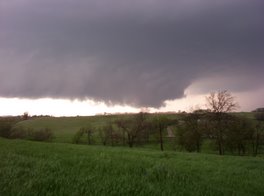"On our expedition 50 years ago, would have never considered leaving a man like that. We were very much aware of our responsibilities to look after any person on the mountain who was in distress. There's no doubt at all that there's been a lowering of standards in recent years, with the commercialisation; as a consequence people are being neglected and are dying."
Hillary's recognition of the "summit seeking" ethic is notable. A similar viewpoint extends throughout many corporations and has a significant impact on enterprise risk which analysts, investors and auditors need to consider more carefully. Appropriately defined in corporate environments, summit seeking is the pursuit of return at nearly any cost.
My own experience with summit seeking organizations spans nearly twenty years. Having worked in several high risk tech and telecom organizations, I experienced the same ethic in interactions with investment bankers, corporate partners, carrier and technology vendors and in a few cases, our own organization. First-hand experience with partners and executives at Inacom, Enron, Worldcom, Lucent and Level3 confirmed this ethic was exceptionally prevalent.
Upon first inspection, summit seeking ala "our corporation seeks exceptional return for its investors" sounds great. What shareholder doesn't want outstanding returns? Yet somehow, this practice highly correlates to later catastrophic collapses of the same investments, usually leaving the stakeholders high and dry. Is there an explanation for this correlation? Is the corporate summit seeking ethic complicit in these catastrophic outcomes?
It is my suggestion that this is indeed the case. Having worked through enterprise risk management assessments and operations audits, I would suggest there are significant, observable processes that cause this high-level ethic to eventually allow the organization to implode. Traditional risk management texts discuss the trade-off between risk and return. To an organization, this choice is made in the selection of its corporate risk/return ethic by its senior management. Specifically, organizations can choose one of the following:
1. Summit Seeking Ethic: Return is sought at any cost and processes that impair this pursuit are dismantled and discarded.While one would hope that the increased regulatory call for ethical corporate governance would predict the choice of the risk-managed ethic, experience indicates otherwise. Recurring corporate implosions, stock-option backdating scandals and periodic hedge fund disasters tell us the summit seeker is alive and well in many companies. It is possible that many organizations fall into the summit-seeking trap by failing to realize this is the default choice should they fail to establish a top-down risk-managed approach.
2. Risk-Managed Ethic: Risk appetite is defined and budgeted. Return within that budget is maximized given the constraints of the risk-management framework.
Observing and predicting the presence of a summit seeking ethic can be difficult, but to the astute analyst, the evidence is present. At the operational level, summit-seeking directives from the top lead to the dismantling of mid-level controls. Credit quality standards get overlooked, maintenance is curtailed to leverage new projects and provide revenue growth, and product or service guarantees are complicated with unrealistic conditions in order to defer or eliminate ever-increasing customer returns, refunds and cancellations.
Notable metrics that illustrate this condition include:
- increasing delays in service delivery
- increasing levels of product returns or service credit requests
- difficulties in accounts receivables collections which may be attributed to unrecognized returns and credit requests
- inventory manipulation, including provisions that require customers take early or complete delivery of products to attain financing
- increasing litigation activity, either by the organization's own legal department or by customers in conditions where contractual performance is disputed
- indications of relaxed corporate credit, especially in organizations that provide substantial internal financing programs for customer purchases
